The Laboratory of Molecular Breeding, Arid Land Research Center (ALRC), Tottori University
Welcome to the Laboratory of Molecular Breeding, Arid Land Research Center
The site has been renewed.
Go to a new page after 5 seconds.
Information
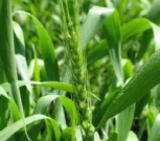
Publication (Dec, 2020)
The genome sequence of the Japanese wheat variety "Norin 61" has been deciphered, and Professor Tsujimoto wrote a commentary on the significance of this research.Details [Commentary ]
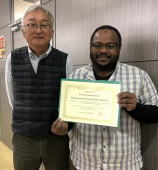
News (Dec, 2020)
Mr. Mohammed Balla won the Best Presentation Award in Chugoku Branch Meeting of the Japanese Society of Breeding held December 12th online. The presentation title is "Harnessing the genetic diversity of wild emmer wheat for genetic improvement of durum wheat"
Publication (Dec, 2020)
New paper was published in Scientific Reports by Dr. Ishii et al.Details
[Abstract]

Publication (Oct, 2020)
New paper was published in Scientific Reports by Mr. Michael et al.Details
[Abstract]
Publication (Dec, 2019)
The 3D organization of chromatin plays an important role in genome stability and many other pivotal biological aspects. Here, we review the technology development in chromatin imaging in living and fixed cells, and their potential application in plant science.Details [Abstract]

Publication (Nov, 2019)
We developed a new compound to improve plant drought tolerance drastically. This compound is abscisic acid (ABA) agonist and able to activate ABA signaling pathway more strongly than ever. Thus, this is expected to contribute agriculture in arid and water-supply limited region.Details [Abstract]

Publication (Oct, 2019)
We established a combination of RGEN-ISL, immunostaining, and EdU labeling to visualize specific repeats, protein, and DNA replication sites, simultaneously in maize. RGEN-ISL allow us to visualize the genome structures more clear than FISH method.Details [Abstract]

Publication (Jun, 2019)
New paper was published in Plant Signaling & Behavior by Dr.Mega et al.Details [Abstract]

Publication (Jun, 2019)
New paper was published in Journal of Experimental Botany by Dr.Abdelrahman et al.Details [Abstract]
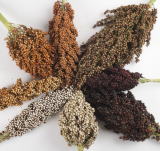
Publication (Apr, 2019)
New paper was published in Food Science & Nutrition by Dr.Tilal et al.Details
[Abstract]

Publication (Mar, 2019)
We established a tool to visualise difined genomic sequence based on CRISPR/Cas9 technology in human and plants (RNA-guided endonuclease-in situ labeling (RGEN-ISL)).Details
[Abstract]

Publication (Feb, 2019)
New paper was published in nature plants by Dr.Mega et al.Details
[Abstract]
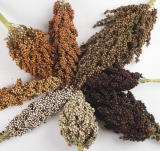
Publication (Nov, 2018)
New paper was published in BioMed Research International by Dr.Nasrein et al.Details
[Abstract]

Publication (Nov, 2018)
New paper was published in Scientific Reports by Mr. Edet et al.Details
[Abstract] [PDF]

Publication (Oct, 2018)
New paper was published in Scientific Reports by Mr. Edet et al.Details
[Abstract] [PDF]

Publication (Apr, 2018)
New paper was published in Theoretical and Applied Genetics by Dr.Yasir et al.Details
[Abstract]

Publication (Mar, 2018)
New paper was published in BMC Genetics by Mr. Edet et al.Details
[Abstract]
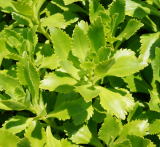
Publication (Mar, 2018)
New paper was published in ikusyugakukenkyu by Miss Koji et al.Details
[Abstract]
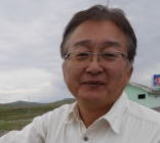
Publication (Feb, 2018)
"Useful Plants in Drylands, Edible Plants" published by Professor Tsujimoto et al.Details

Publication (Dec, 2017)
New paper was published in Breeding science by Dr.Awad et al.Details
[Abstract]

Publication (Nov, 2017)
New paper was published in Breeding Science by Dr.Tanaka et al.Details
[Abstract]

Publication (Sep, 2017)
New paper was published in Front. Plant Sci. by Dr.Kumar et al.Details
[Abstract]

Publication (Aug, 2017)
New paper was published in Front. Plant Sci. by Dr.Li et al.Details
[Abstract]

Publication (July, 2017)
New paper was published in Breeding Science by Dr.Awad et al.Details
[Abstract]
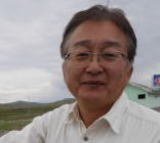
Publication (Oct, 2016)
"Gametocidal System for Dissecting Wheat Chromosomes" (pp101-109) by Professor Tsujimoto was published in Chromosome and Genomic Engineering in Plants as a book of Springer.Details

Publication (Aug, 2016)
New paper was published in Journal of Arid Land Studies by Professor Tsujimoto et al.Details
[Abstract]

Publication (Aug, 2016)
New paper was published online in Plant Genetic Resources by Dr.Gorafi et al.Details
[Abstract]

Publication (Mer, 2016)
New paper was published in Breeding Science by Dr.Gorafi et al.Details
[Abstract]

Publication (Sep, 2015)
The proceeding of the 12th International Wheat Genetics Symposium was published as a book of Springer. The title is 'Advances in Wheat Genetics: From Genome to Field .Details
[Abstract of Tsujimoto's article]

Publication (July, 2015)
New paper has published in Chromosome Research by Dr. Ishii et al.Details
[Abstract]

Publication (Jan, 2015)
New paper has published in Crop and Pasture Science by Dr. Liu et al.Details
[Abstract]
Our Research
Introduction
Wheat is the most important staple diet for human. The increase in production of wheat has slowed down in the last two decades. As ‘Green Revolution’ saved the hungry in 1960’s using Rht (semi-dwarf) genes, we must find new genes to solve the global food shortage that we will face in the 21st centry. Thus, we decided the research of our laboratory to expand genetic variation of wheat by using chromosome and gene transferring methods.
From 2007, we got involved in a GCOE program entitled ‘Global Center of Excellence for Dry land Science’ and working in the ‘Molecular Breeding Group’. We are studying to produce wheat lines which are tolerant to drought and/or salinity, collaborating with ICARDA (International Center of Agricultural Research in Dry Area, Syria).
In April 2011 we moved our previous lab (Lab of Plant Genetics and Breeding Science, Faculty of Agricultyre, Tottori University) to ALRC and develop the results to the world through the global netwark of ALRC. It is promising news that Dr. Amin E. Eltayeb, molecular geneticist, joined in this lab as an assistant professor.
We are also involved in the Research Center for Chromosome Engineering, Tottori University established in 2009 and opened Plant Chromosome Engineering Division.
We are keepig alliance with Dr. H. Tanaka, Lab. of Plant Genetics, Faculty of Agriculture, Tottori University.
Present Research
1. Expansion of genetic resources by wide crosses and use of the variation for breeding
Leymgrass (Leymus mollis and Leymus racemosus) is a perennial grass species living in sea shore. We made hybrids between the grasses and wheat and selected wheat lines with a pair of the leymgrass chromosome (alien chromosome addition lines). We found lines tolerant to diseases, increasing flour quality and requiring less fertilizer for normal growth. Molecular genetical and cytological techniques are very helpful for this research.2. Development of method to introduce chromosomes of far-related species to wheat
When wheat is crossed with different species, various abnormalities appear. For example, the pollen of pearl millet (drought-tolerant crop originating from Africa) is crossed to the pistil of wheat, fertilization occurs normally, but chromosomes of the pearl millet are eliminate gradually from the hybrid embryos. If we will able to control this elimination, we could introduce the drought-tolerant genes to wheat. We are studying to know the mechanism of this chromosome elimination. Wide hybridization, embryo rescue, 3-D FISH methods are used in this work.3. Exploration of wheat variation in the world
To know what wheat is cultivated in the world and how it is used, we have participated in several plant explorations. The countries which we explored are China, Nepal, Bhutan, Sikkim, India, Armenia, Tajikistan, Uzbekistan and Azerbaijan.4. Application of gene recombination method to produce stress-tolerant crops
Research background and profile of professors
Dr. Hisashi TSUJIMOTO
Professor. Born in 1958, Got a PhD by researching on “Hybrid dysgenesis in wheat by gametocidal genes” from Kyoto University in 1986. Majors are General Genetics, Cytogenetics and Breeding Science.
Dr. Amin E. ELTAYEB
Assistant Professor. Born in 1972, Got a PhD by working on “Imroving plant tolerance to environmental stresses by overexpression and identification of stress tolerance genes” from Tottori University in 2008. Majors are Plant Biotechnology.
Main facilities in our laboratory
Fluorescence microscopes, Cooled CCD cameras, Discussion microscope, Clean bench, Incubators, Thermal cyclers, Real-time PCR, DNA sequencer, DNA capillary electrophoreser, Grass houses, Growth cambers, Experimental field... Other common facilities are listed in the homepage of ALRC.
Link to the page of Facilities (in our homepage)
Techniques learnt in our laboratory
DNA techniques (DNA cloning, PCR, Electrophoresis, blot hybridizations, Sequencing, TILLING, SuperSAGE, Homology Search, Phylogenetic analysis), Protein techniques (SDS-PAGE, Acid PAGE, 2D-PAGE, Structure analyses, SDS-sedimentation analysis), Chromosome techniques (Chromosome observation in mitosis and meiosis, chromosome banding, Fluorescent in situ hybridization, Genomic in situ hybridization, 3D-analysis), Transformation of wheat, potato and other crops.
Materials used in our laboratory
Wheat (cultivars, genetical and chromosomal lines, synthetic wheats, alien chromosome addition lines, amphidiploids), Pearl millet, Leymgrass, and wheat-related wild grasses. These materials are listed in the home page of NBRP-wheat (National BioResouce Project-wheat).
LINK
- Tottori University
- Faculty of Agriculture, TU
- ALRC (Arid Land Research Center), TU
- CERC (Chromosome Engineering Research Center), TU (only in Japanese)
- ICARDA (International Center of Agricultural Research in Dry Area)
- NBRP-wheat (National BioResouce Project-wheat)
- GCOE(Global COE Program)
ADDRESS
1390 Hamasaka, Tottori 680-0001, JAPAN
TEL/FAX: 0857-21-7213
E-mail: tsujim(at mark)
tottori-u.ac.jp
(Please change "(at mark)" to "@" before sending e-mail.)
You can also send e-mail from this form.


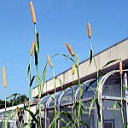

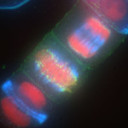




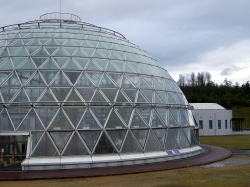
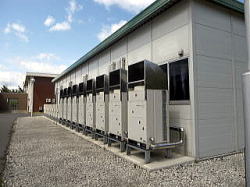
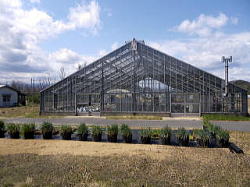
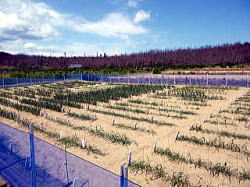
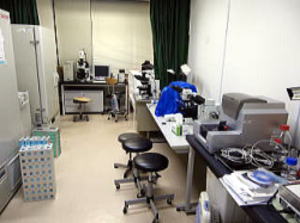





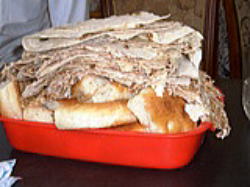
Publication (Jan, 2021)
New paper was published in Nature Food.Details
[Abstract]